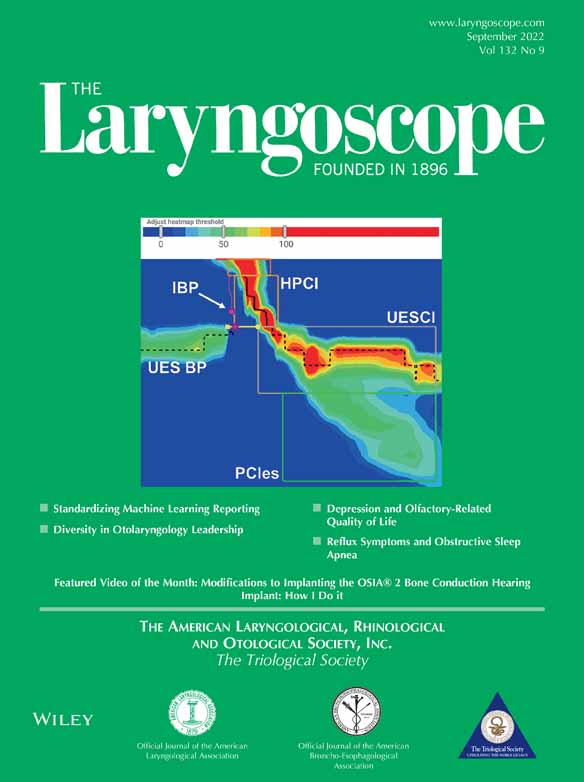Removal of Small Cavernous Hemangioma in Orbital Apex Through an Endoscopic Transethmoidal-Sphenoidal Approach
Editor's Note: This Manuscript was accepted for publication on March 16, 2022.
The authors have no conflicts of interest to disclose.
g.z. and z.p. contributed equally to this work.
Abstract
Objective
To investigate the feasibility, efficacy, and safety of an endoscopic transethmoidal-sphenoidal approach in removing a small cavernous hemangioma (CH) located in the deep lateral orbital apex.
Methods
This study involved 19 patients diagnosed with a CH located in the deep lateral orbital apex. All patients underwent an endoscopic transethmoidal-sphenoidal approach for removal of the CH. The best-corrected visual acuity (BCVA), visual field, and surgery-related complications were analyzed and compared.
Results
All tumors in this study were completely removed. The mean BCVA was LogMAR 0.97 ± 0.97 preoperatively and LogMAR 0.38 ± 0.64 postoperatively (p < 0.05). The mean visual field index was 52.26% ± 33.26% preoperatively and 75.47% ± 30.49% postoperatively (p < 0.05). The mean deviation index was −17.48 ± 12.43 dB preoperatively and −10.10 ± 10.85 dB postoperatively (p < 0.05), and the pattern standard deviation was 6.37 ± 3.77 dB preoperatively and 4.90 ± 3.56 dB postoperatively (p > 0.05). Four (21.1%) patients developed oculomotor limitations and two (10.5%) patients developed ptosis after surgery. All of these symptoms resolved spontaneously, and no other complications occurred. The mean follow-up time was 6.71 ± 3.89 months.
Conclusion
The endoscopic transethmoidal-sphenoidal approach is an effective and minimally invasive treatment for removing small CH in the deep lateral orbital apex.
Level of Evidence
4 Laryngoscope, 132:1743–1749, 2022




